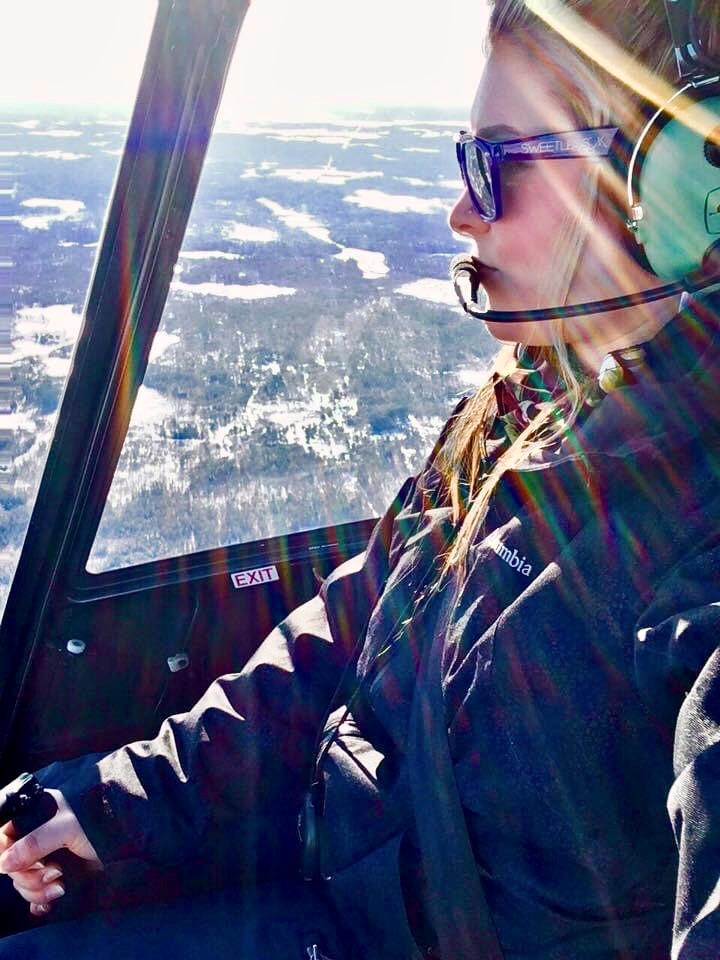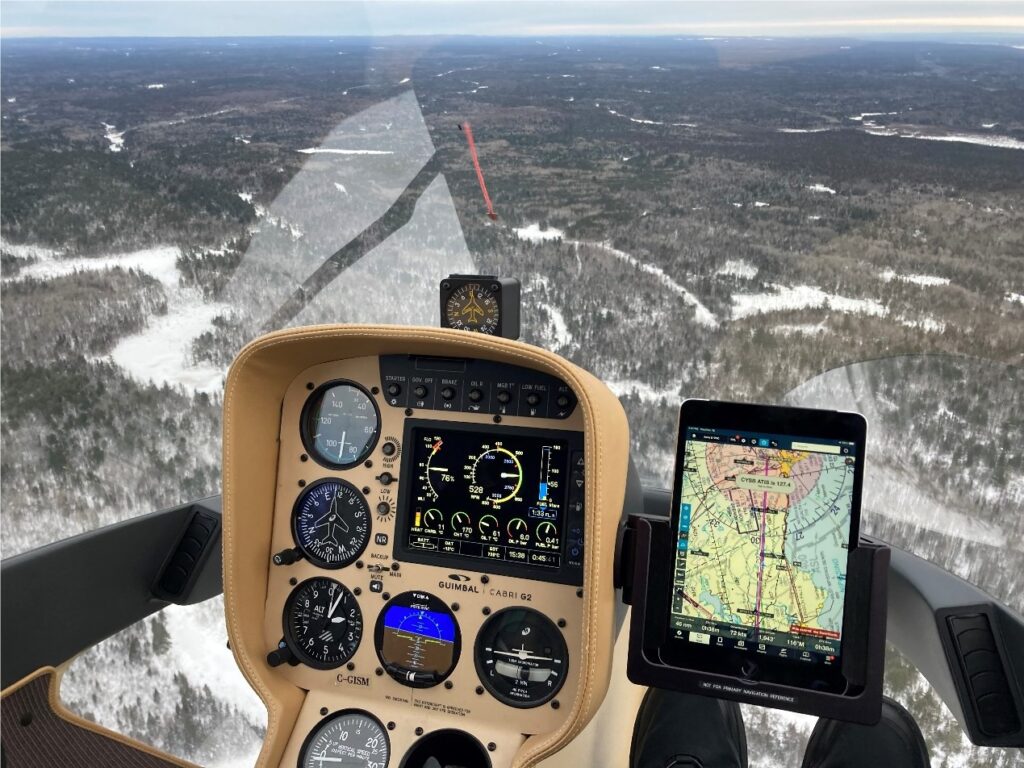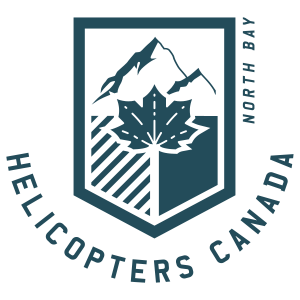4 Moments of Truth: The First Solo Long-Cross
The first solo long-cross is often a defining moment on your path to becoming a professional helicopter pilot. It instills a level of confidence, realism, and pressure; a solid reminder that you have ended up exactly where you were hoping to be…flying! When you embark on learning something new, there are always “firsts” along the way that get you one step closer to achieving your goal. The first “long-cross” – a student’s first time flying a “cross country” trip landing at different airports than where training happens – is a highly anticipated flight that is incredibly rewarding and often also nerve-wracking. To help prepare you for your first trip, we have gathered stories from 3 pilots on their first solo long-cross. Here what they have to say on their first experience and how they felt both before and after!
Mackenzie – Line Pilot & Student Coordinator
I almost didn’t let my solo long cross happen. After I did the trip dual with one instructor (which was a hurdle on it’s own) another instructor was ready to send me off on my own. I did not believe him. On a cold March morning, I walked into the Ready Room, saw my name on the flight line under GXEG (the aircraft callsign) and above “S LXC” (S for solo, and LXC for long cross country), and walked back out. After some convincing from the instructor that flew dual with me a week ago, I agreed I could at least try to fly the trip the same way I did with him. I walked out to the Robinson R22, started up, and told the tower what I intended to do. Lifting into a hover, I then taxied to the runway and took off to the south like I had done dozens of times before… so far so good. 2,500 feet above the city of North Bay, I got myself on course and called to the tower that I was leaving the control zone 7 miles away from where I started. Once I allowed the sweaty focus of frequencies, headings, and Ps & Ts (pressures and temperatures shown on the engine gages) to ease up, the first wave of “I’m actually doing this by myself” hit me. I set my collective friction at cruise power, and with a shaky left hand felt for my cell phone in my coat pocket. Without taking my eyes off the horizon ahead, I held up the camera and captured this moment:

Though I didn’t know it back then, I can now say that I took this picture to prove to other people (as much to prove to myself) that if I could make it this far through my flight training I could – and would – finish it. With my new-found determination I trekked on to my first destination: Muskoka. Following the pre-drawn lines on my map, I called out my position reports on the radio as I made my way over the runway, then back up to altitude, turning towards my next destination: Parry Sound. The promise of a halfway point quickly drew the nose of my little R22 directly to the fuel pumps at the airport. I settled down in front of the big Av Gas tank, shut down my machine, and jumped out to show the attendant where my fuel tanks were. After what seemed like the shortest lunch break in history, I psyched myself back up to jump in the helicopter and get those rotors turning again. The rest of the trip was a blur; I don’t remember my leg from Parry Sound, my touch-and-go at the snow-covered grass strip in Sundridge, or my departure to the north. My memory flashes back to my skids touching down at North Bay Airport in the exact place I started from 3 hours earlier. At that moment I realised I had accomplished the hardest and most intimidating thing I had ever done… just like I said I would.
Kong – Helicopters Canada Graduate
The long cross country flight was always the highest expectant part for me, and many other students, during flight training. It required multiple preparation flights and developing planning skills, then combining them all at once. This training forced me to improve all my essential abilities as a helicopter pilot, such as radio communication, map reading, basic aircraft control and stress management. All of these were all exactly what happened in my solo long cross country flight in the 2-seater Cabri G2. During the flight, the wind direction and speed was not exactly as I had planned before the flight. This posed a challenge that I knew I had to use my training to overcome. However, once I could identify my location on the map, I was able to find my way back on track, which was a great self-learning experience and ultimately helped me build self-confidence as a future professional pilot. Flying cross country and other navigation trips around North Bay also gave me a unique experience to enjoy the beauty that Mother Nature has to offer in Ontario… from the sky!

Dominik – Operations Manager & Flight Instructor
Northern Ontario with its rolling hills, lakes, rivers, and rock outcrops is a very scenic and pretty landscape to fly over. It’s great for navigation exercises because the vast landscapes and big distances between towns present some good challenges and force you to get comfortable trusting your map and compass heading. Just when you start to think “where am I?”, there are usually some power lines or train tracks to help you confirm your location and track. I have been fortunate to do my first few navigation exercises in that environment, but when my first solo cross country flight came along I felt a little nervous again because it took me more to Southern Ontario airspace and landscapes. I felt like a fish out of water; so many towns, roads, and civilization everywhere! Luckily, the same principles I had learned initially still applied, and I was happy (and maybe a little relieved) when I did find my airports and eventually my destination. With more radio communication than in the remote north, but also more visual landmarks and references, I felt it was a good trade off and a nice experience for a long solo cross country!
Are you considering a career in aviation? Head over to our article Do Your Research where Pilot and Student Coordinator Mackenzie Morrow shares her tips on everything you should think about while doing your research.

Awesome! This is actually an amazing post, I’ve got so much clear information on this topic from your piece of writing.
I was able to find good advice from your articles.